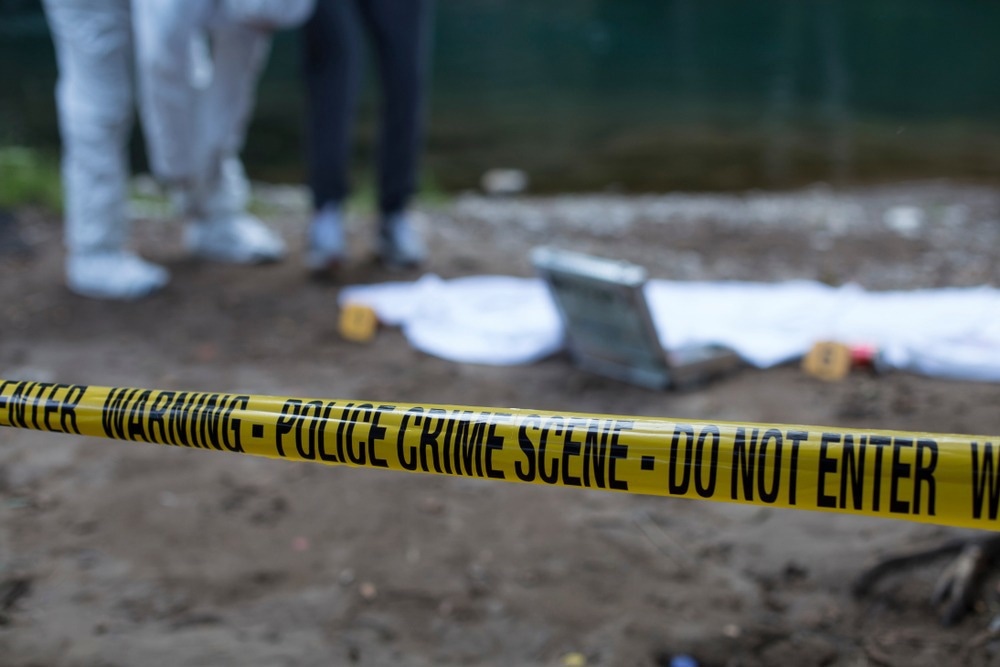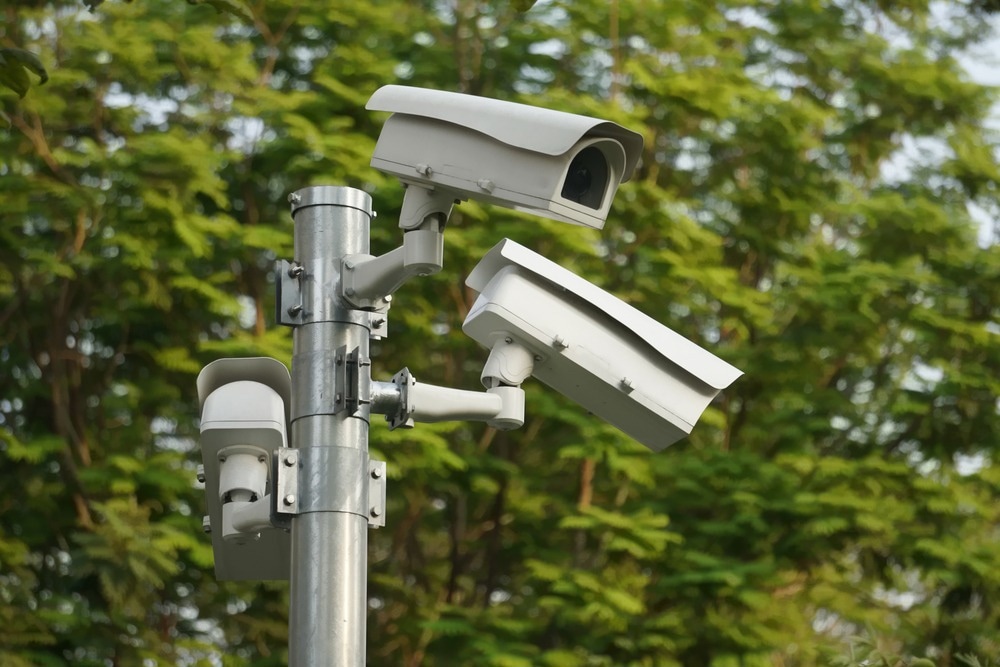When it comes to criminal investigations, forensic video analysis has emerged as a powerful tool that is revolutionizing how law enforcement agencies gather, process, and interpret visual evidence.

Image Credit: Darko Cacic/Shutterstock.com
Gone are the days of solely relying on the analysis of fuzzy CCTV footage, as 86% of the world today walks around with a smartphone camera in their pocket. Video analysis has proven instrumental in solving crimes, identifying suspects, and providing crucial evidence in a court of law. This article will explore some of the benefits of forensic video analysis, how it works within an investigation, some of its technologies and techniques employed, and highlight a crucial case study demonstrating its practical and impactful application.
How It Works
Analyzing forensic video evidence is a multifaceted process, as it involves the examination of digital and analog video recordings to extract valuable information, clarify details, and uncover any hidden evidence (Siddiquee et al., 2020). Some of the key steps involved include:
Collection and Preservation
As with any evidence, it is of utmost importance to ensure it is collected and preserved with continuity to ensure the integrity of evidence. This includes ensuring that the original footage is secured, different copies are made for analysis and preservation, and the documentation is secured for chain of custody (Knott & Reaves, 2015).
Authentication
As well as ensuring that the footage is original, it needs to be authenticated. There are numerous video-editing programs that can be AI-powered, and an analyst needs to ensure the recording has not been tampered with (Knott & Reaves, 2015).
Enhancement
The analysts of the video footage may choose to enhance the video to improve its clarity. This may include adjusting the brightness, contrast, color, noise reduction, stabilizing shaky footage, and making any other enhancement to reveal details that may have otherwise remained hidden (Siddiquee et al., 2020).
Examination
Once the video footage has been enhanced to satisfaction, the analyst reviews the actual footage, focusing on specific and broad details of the recording. These details can be faces, license plates, street signs, clothing, time of day, and any relevant objects (Hannis, 2013).
Comparison and Matching
In some cases, forensic video analysts want to compare people of interest located in police databases to individuals in the footages, using facial recognition databases or comparing to known objects such as vehicles (Knott & Reaves, 2015). This could lead to identifying individuals or vehicles.
Reconstruction
Regarding accidents, analysts may use video footage to reconstruct the events, provide a visual representation of what occurred, and employ specialized tools to measure distances and create still images for further examination. This can be valuable in court proceedings to explain complex events (Xu et al., 2019).
Benefits of Forensic Video Analysis
Any evidence that is analyzed and presented within a case study cannot stand on its own. There also needs to be a combination of circumstantial evidence, witness statements, trace evidence, digital evidence, or identification evidence such as DNA and fingerprints. Looking at forensic video evidence, some of the benefits of its analysis include:
Identification of Suspects
Like other evidence, forensic video analysis is an important tool used for identifying suspects (Siddiquee et al., 2020). In cases where security cameras capture criminal activity, facial recognition technology and comparison with known individuals can lead to positive identifications.
Enhanced Witness Testimony
Video footage can often serve as supportive or opposing evidence when it comes to witness testimonies, helping to corroborate or contradict details (Hannis, 2013). This ensures more accurate and reliable testimonies in court.
Court Evidence
Video footage provides a tangible, visual representation of events that can be presented in court (Knott & Reaves, 2015). Jurors and judges can see the events firsthand, which aids in a more compelling and persuasive form of evidence.
Crime Scene Reconstruction
The technologies available to enhance and analyze video footage can assist in reconstructing crime scenes, such as for accidents and large events, helping investigators and jurors to understand the sequence of events and timing of occurrences.
Exonerating the Innocent
Forensic video analysis is not only about convicting the guilty but also about exonerating the innocent (Hannis, 2013). In cases of mistaken identity or false accusations, video evidence has immense value in helping to prove a person's innocence.
Technologies and Techniques
Forensic video analysis relies on various amounts of technologies and techniques to achieve the case objectives (Siddiguee et al., 2020). Not all these forensic tools are readily available or spoken about in public forums, as law enforcement agencies like to ensure their tools cannot be compromised or taught its usage outside of their private work environment.
From the tools spoken about, one that can be used for video enhancement are the Adobe Premiere Pro software, Avid Media Composer, and specialized forensic software such as Amped FIVE, which enable analysts to improve the video quality, stabilize footage, and perform any color and brightness correction for better quality Siddiquee et al., 2020).
A second tool includes facial recognition technology specifically designed and used in law enforcement, allowing to identify individuals captured on video film (Knott & Reaves, 2015). A third tool is the automated license plate recognition (ALPR) systems, which can identify and track vehicles by reading the license plates in video footage (Knott & Reaves, 2015). Lastly, there are geographic information system (GIS) tools that can be used to map and analyze locations and movements based on video evidence (Xu et al., 2019).
To further understand how forensic video footage can be applied to different scenarios in criminal investigations, two case studies are discussed below.

Image Credit: Athawit Ketsak/Shutterstock.com
Case Study: London Riots, 2011
During the London Riots of 2011, video footage played a vital role in documenting the chaotic events, identifying individuals involved in criminal activities, and aiding law enforcement in their investigations.
As mentioned at the beginning of this article, the widespread availability of smartphones equipped with cameras allowed both civilians and media outlets to capture hundreds of real-time footage of the riots as they unfolded.
The video footage proved crucial in several instances:
Identifying Perpetrators
Many rioters were captured on camera engaging in criminal activity, such as looting, arson, and acts of violence (Hannis, 2013). The footage served as invaluable evidence for identifying and prosecuting those responsible for the criminal activities. Law enforcement agencies used facial recognition technologies and traditional investigative techniques to match individuals seen in the videos with their identities.
Corroborating Witness Statements
Video evidence was used to provide objective documentation of the event. This helped establish a more accurate and comprehensive account of the incidents, which later enhanced the credibility of the witnesses during court proceedings (Hannis, 2013).
Public Accountability
As with many of the public footage capturing criminal activity, this puts a spotlight and pressure on authorities to take some action. It also serves as a form of public accountability, where the individual who is recording is also able to share this through social media platforms with a global audience, bringing awareness (Hannis, 2013).
Not only did video footage assist law enforcement in their criminal investigation, but it also contributed to public awareness and accountability during a tumultuous period in London's history.
Sources
Knott, D., & Reaves, B. (2015). A Computational Study of Digital Image and Video Analysis for Detecting Suspects of the 2013 Boston Marathon Bombing. Digital Investigation, 13, pp. 89-100.
Siddiquee, M. R., et al. (2020). Forensic Analysis of Video Footage: A Case Study of George Floyd's Death. International Journal of Computer Applications, 179(23), pp. 22-27.
Hannis, R. L. (2013). The Role of Digital Media in the 2011 London Riots: A Forensic Perspective. Digital Investigation, 10(3), pp. 248-259.
Xu, C., Luo, S., & Jiang, G. (2019). Video Analysis for Hit-and-Run Traffic Incident Detection. Journal of Transportation Engineering, Part B: Pavements, 145(1), p. 04018074.
Further Reading
Last Updated: Sep 28, 2023